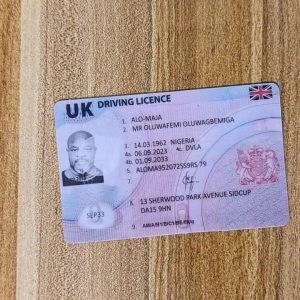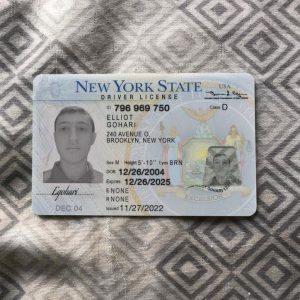info@besstdoc24hrs.net +4915231635788

Australia drivers license
$1,500.00
Australia drivers license,
Sure! In Australia, driver’s licenses are categorized based on the type of vehicle you are authorized to operate. Here’s an overview of the different categories and what they allow you to drive:
Car Licence (C Class) Australia drivers license
- Allows you to drive a motor vehicle with a gross vehicle mass (GVM) not exceeding 4.5 tonnes, designed to carry no more than 12 adults (including the driver), and is not a motorcycle or motor tricycle.
- You can also tow a single trailer with a GVM not exceeding 9 tonnes, or to the manufacturer’s specifications (whichever is less).
- To obtain a car licence, you must be at least 16 years old and hold a learner’s permit for a minimum period.
Motorcycle Licence (R Class)
- Allows you to ride motorcycles of various engine capacities and power outputs, depending on the specific subcategory you hold:
- R-E: Motorcycles with an engine capacity up to 660 ml and a power-to-weight ratio not exceeding 150 kW/tonne.
- R: Motorcycles without any restrictions.
- To obtain a motorcycle licence, you must be at least 16 years old and hold a learner’s permit for a minimum period.
Heavy Vehicle Licence (HR, HC, MC)
Australia drivers license,
Sure! In Australia, driver’s licenses are categorized based on the type of vehicle you are authorized to operate. Here’s an overview of the different categories and what they allow you to drive:
Car Licence (C Class) Australia drivers license
- Allows you to drive a motor vehicle with a gross vehicle mass (GVM) not exceeding 4.5 tonnes, designed to carry no more than 12 adults (including the driver), and is not a motorcycle or motor tricycle.
- You can also tow a single trailer with a GVM not exceeding 9 tonnes, or to the manufacturer’s specifications (whichever is less).
- To obtain a car licence, you must be at least 16 years old and hold a learner’s permit for a minimum period.
Motorcycle Licence (R Class)
- Allows you to ride motorcycles of various engine capacities and power outputs, depending on the specific subcategory you hold:
- R-E: Motorcycles with an engine capacity up to 660 ml and a power-to-weight ratio not exceeding 150 kW/tonne.
- R: Motorcycles without any restrictions.
- To obtain a motorcycle licence, you must be at least 16 years old and hold a learner’s permit for a minimum period.
Heavy Vehicle Licence (HR, HC, MC)
- Authorizes you to drive larger and heavier vehicles, depending on the specific subcategory you hold:
- HR (Heavy Rigid): Allows you to drive rigid trucks with a GVM exceeding 8 tonnes.
- HC (Heavy Combination): Allows you to drive articulated vehicles (prime movers and trailers) with a GVM exceeding 9 tonnes.
- MC (Multi Combination): Allows you to drive vehicles with multiple trailers, where the total GVM of the combination exceeds 9 tonnes.
- To obtain a heavy vehicle licence, you must be at least 18 years old, hold a car licence for a minimum period, and pass additional theory and practical tests specific to the desired category.
Other Licence Categories:
- LR (Light Rigid): Allows you to drive rigid trucks with a GVM exceeding 4.5 tonnes but not exceeding 8 tonnes.
- MR (Medium Rigid): Allows you to drive rigid trucks with a GVM exceeding 8 tonnes but not exceeding 15 tonnes.
- Buses (AU): Allows you to drive buses with a seating capacity exceeding 12 passengers (excluding the driver).
Additional Information:
- The minimum age to obtain a driver’s licence in Australia varies depending on the category.
- You can obtain a driver’s licence by taking theoretical and practical driving tests specific to the desired category.
- You can find more information about driver’s licenses in Australia on the website of your state or territory’s transport authority.
Can a foreigner get a driver license in Australia?
Yes, foreigners can get a driver’s license in Australia, but the process and requirements vary depending on your:
1. Visa Status:
- Temporary residents: Depending on your visa category and duration of stay, you might be eligible for a visitor’s licence, allowing you to drive on your overseas licence for a specific period (e.g., 3 months for most tourist visas).
- Permanent residents and citizens: You can apply for a full Australian driver’s licence.
2. Overseas Licence:
- Recognized countries: If your country has a driver’s licence agreement with Australia, you can potentially exchange your licence for an Australian one without further testing.
- Non-recognized countries: You’ll need to complete the full licensing process, including theory and practical tests, regardless of your driving experience.
3. Age and Experience:
- Minimum age requirements vary depending on the licence category and state/territory.
- Overseas driving experience might be considered for exemption from some tests, but each case is assessed individually.
General Steps:
- Check eligibility: Contact your state/territory’s transport authority to determine your specific requirements based on your visa and licence situation.
- Gather documents: This usually includes your passport, visa, overseas licence (if applicable), and proof of residency.
- Apply for a learner’s permit: This allows you to practice driving under supervision.
- Take theory and practical tests: Requirements vary, so check with your local authority.
- Apply for your full driver’s licence: Once you pass the tests, you can apply for your full licence.
Resources:
- Austroads – Overseas Drivers: https://austroads.com.au/drivers-and-vehicles/overseas-drivers
- Individual State/Territory Transport Authorities: Each state/territory has its own website with specific information and application procedures. You can find their websites through their government portals.
Remember:
- Start early, as the process can take some time.
- Ensure you have all the necessary documents and meet the eligibility criteria.
- Each state/territory might have slight variations in processes and requirements.
Is it easy to get licence in Australia?
The ease of getting a driver’s license in Australia depends on several factors, including:
Your visa status:
- Temporary residents: Obtaining a visitor’s license to use your existing license is relatively straightforward if your country has a reciprocal agreement with Australia.
- Permanent residents and citizens: The full licensing process can be more involved, requiring theory and practical tests, although some exemptions might apply based on your overseas license and experience.
Your overseas license:
- Recognized countries: If your country has a driver’s license agreement with Australia, exchanging your license for an Australian one is usually easier, potentially avoiding tests.
- Non-recognized countries: You’ll need to go through the full licensing process, regardless of your driving experience.
Your age and experience:
- Younger applicants may face more stringent requirements and longer waiting periods.
- Extensive driving experience in a similar country can potentially lead to exemptions from certain tests or shorten the process.
Specific state/territory regulations:
- Each Australian state and territory has slightly different requirements and processes for obtaining a driver’s license.
Overall, obtaining a driver’s license in Australia is generally considered straightforward for temporary residents with valid licenses from recognized countries. However, the process can be more complex for permanent residents and citizens, especially if their overseas license is not recognized or their experience is limited.
Here are some additional factors to consider Australia drivers license
- The cost of obtaining a license: This can vary depending on the state/territory and the tests required.
- The waiting times for tests and appointments: These can vary depending on location and demand.
- The difficulty of the theory and practical tests: These are designed to assess your knowledge and skills, so their difficulty can be subjective.
To get a better understanding of the ease of obtaining a license in your specific situation, it’s highly recommended to consult the website of your state/territory’s transport authority. They will provide the most accurate and up-to-date information on requirements, eligibility, and the application process.
How to get a driver’s license in Australia
The process of getting a Australia drivers license varies slightly depending on which state or territory you’re in, but the general steps are similar. Here’s a basic overview:
1. Learner’s Permit:
- Age requirement: This varies by state, but it’s typically between 16 and 18 years old.
- Knowledge test: You’ll need to pass a written or computer-based test on road rules and traffic signs.
- Vision test: You’ll need to meet a minimum vision standard.
2. Provisional License:
- Driving experience: You’ll need to log a certain number of supervised driving hours (usually between 50 and 120 hours) with a qualified supervisor. Some states require specific types of driving experience, like night driving.
- Driving test: You’ll need to pass a practical driving test that assesses your ability to safely operate a vehicle on the road.
3. Full License:
- Waiting period: After meeting the requirements for your provisional license, you’ll need to wait a certain period (usually between 12 and 24 months) before being eligible for a full license.
- Clean driving record: You’ll need to have a clean driving record during your provisional license period
How long does it take to get a license in Australia?
The time it takes to get a driver’s license in Australia can vary depending on several factors, including:
Your age:
- Younger drivers typically have longer waiting periods between license stages compared to older individuals.
- For example, in some states, drivers under 21 might need to hold a learner’s permit for 12 months, while those over 25 might only need 3 months.
Your state or territory:
- Each jurisdiction has its own specific requirements and timelines for obtaining a license.
- Some states might require more driving hours or longer waiting periods than others.
Your individual learning pace:
- The time it takes to master driving skills and pass your tests varies from person to person.
- Some people might need more practice hours than others to feel confident and pass the driving test.
Here’s a rough estimate of the minimum timeframes for each stage:
Learner’s Permit:
- Age requirement: Varies by state, typically between 16-18 years old.
- Timeframe: Immediate once you pass the knowledge and vision tests.
Provisional License:
- Minimum waiting period: Varies by state and age, ranging from 3 months (over 25 in some states) to 12 months (under 21 in many states).
- Driving experience: Varies by state, but typically between 50 and 120 supervised driving hours, including specific types like night driving in some cases.
- Driving test: Pass a practical driving test after meeting the experience requirement.
Full License:
- Minimum waiting period: Varies by state and age, ranging from 12 months to 36 months.
- Clean driving record: Maintain a clean record during your provisional license period.
Total minimum time:
- Therefore, the fastest you could potentially get a full license might be around 15 months to 21 months, assuming you pass all tests and meet requirements on time.
- However, this is a minimum and doesn’t account for individual learning paces, potential delays in booking tests, or driving record issues.
Additional tips of Australia drivers license
- Check the official government website for your state/territory for the most accurate and up-to-date information.
- Consider taking driving lessons from a qualified instructor to improve your skills and confidence.
- Start practicing driving early and consistently to meet the required hours more efficiently.
Remember, the focus should be on developing safe and responsible driving habits, not just getting your license as quickly as possible.






Reviews
There are no reviews yet.